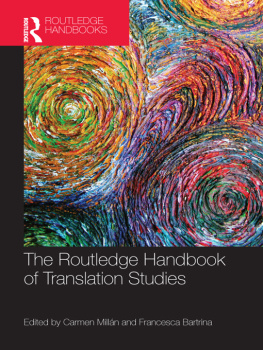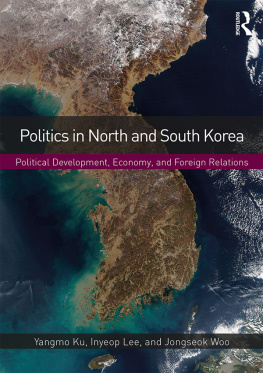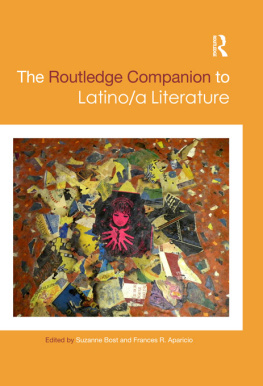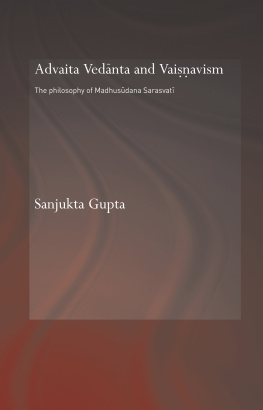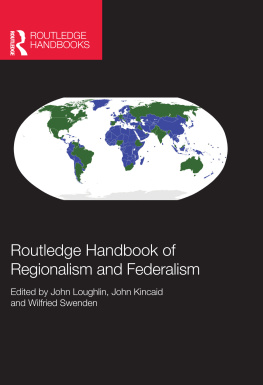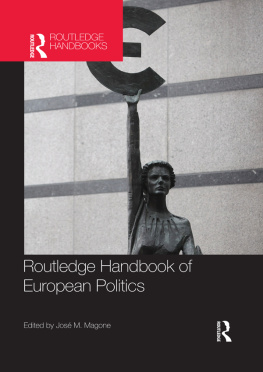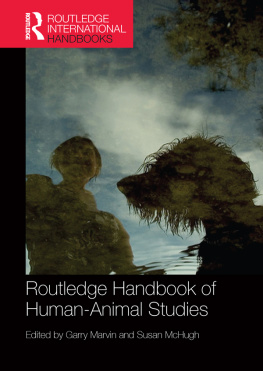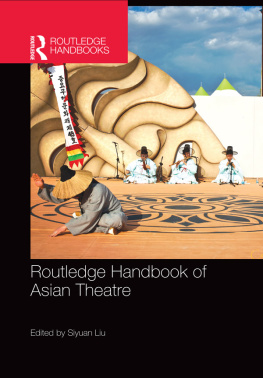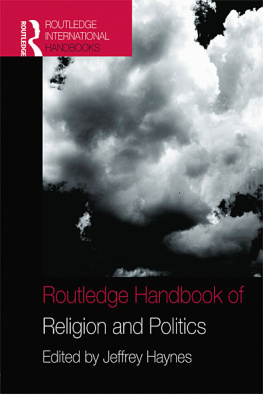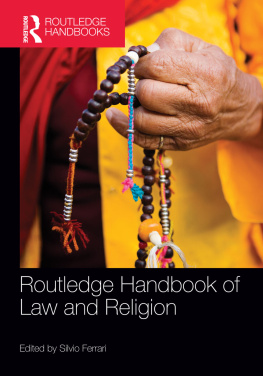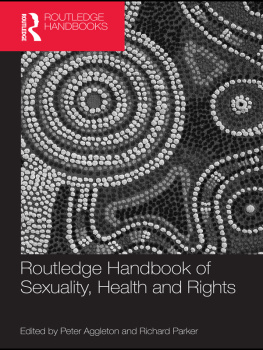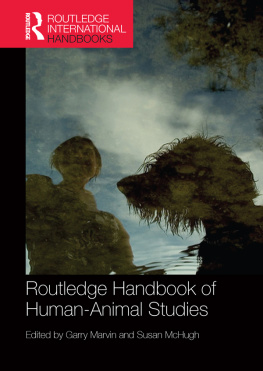Routledge. - The Routledge Handbook of the Bioarchaeology of Human Conflict
Here you can read online Routledge. - The Routledge Handbook of the Bioarchaeology of Human Conflict full text of the book (entire story) in english for free. Download pdf and epub, get meaning, cover and reviews about this ebook. City: London;New York, year: 2014, publisher: Taylor and Francis;Routledge, genre: Art. Description of the work, (preface) as well as reviews are available. Best literature library LitArk.com created for fans of good reading and offers a wide selection of genres:
Romance novel
Science fiction
Adventure
Detective
Science
History
Home and family
Prose
Art
Politics
Computer
Non-fiction
Religion
Business
Children
Humor
Choose a favorite category and find really read worthwhile books. Enjoy immersion in the world of imagination, feel the emotions of the characters or learn something new for yourself, make an fascinating discovery.
- Book:The Routledge Handbook of the Bioarchaeology of Human Conflict
- Author:
- Publisher:Taylor and Francis;Routledge
- Genre:
- Year:2014
- City:London;New York
- Rating:4 / 5
- Favourites:Add to favourites
- Your mark:
- 80
- 1
- 2
- 3
- 4
- 5
The Routledge Handbook of the Bioarchaeology of Human Conflict: summary, description and annotation
We offer to read an annotation, description, summary or preface (depends on what the author of the book "The Routledge Handbook of the Bioarchaeology of Human Conflict" wrote himself). If you haven't found the necessary information about the book — write in the comments, we will try to find it.
Routledge.: author's other books
Who wrote The Routledge Handbook of the Bioarchaeology of Human Conflict? Find out the surname, the name of the author of the book and a list of all author's works by series.
The Routledge Handbook of the Bioarchaeology of Human Conflict — read online for free the complete book (whole text) full work
Below is the text of the book, divided by pages. System saving the place of the last page read, allows you to conveniently read the book "The Routledge Handbook of the Bioarchaeology of Human Conflict" online for free, without having to search again every time where you left off. Put a bookmark, and you can go to the page where you finished reading at any time.
Font size:
Interval:
Bookmark:
THE ROUTLEDGE HANDBOOK OF THE BIOARCHAEOLOGY OF HUMAN CONFLICT
If human burials were our only window onto the past, what story would they tell? Skeletal injuries constitute the most direct and unambiguous evidence for violence in the past. Whereas weapons or defences may simply be statements of prestige or status and written sources are characteristically biased and incomplete, human remains offer clear and unequivocal evidence of physical aggression reaching as far back as we have burials to examine.
Warfare is often described as senseless and as having no place in society. Consequently, its place in social relations and societal change remains obscure. The studies in The Routledge Handbook of the Bioarchaeology of Human Conflict present an overview of the nature and development of human conflict from prehistory to recent times as evidenced by the remains of past people, in order to explore the social contexts in which such injuries were inflicted. A broadly chronological approach is taken from prehistory through to recent conflicts; however, this book is not simply a catalogue of injuries illustrating weapon development or a narrative detailing progress in warfare but rather provides a framework in which to explore both continuity and change based on a range of important themes that hold continuing relevance throughout human development.
Christopher Knsel is Associate Professor in Bioarchaeology in the Department of Archaeology, University of Exeter. Works include Blood Red Roses: The Archaeology of a Mass Grave from Towton, AD 1461 (co-ed., 2000, 2007), Social Archaeology of Funerary Remains (co-ed., 2006) and Velim: Violence and Death in Bronze Age Bohemia (2007), co-authored with Anthony Harding, Radka umberov and Alan Outram. He is currently working on Funerary Archaeology: A Bioarchaeological Synthesis and serves as Co-Head of the Human Remains Team at Neolithic atalhyk (Turkey).
Martin J. Smith is Senior Lecturer in Forensic and Biological Anthropology in the School of Applied Sciences, Bournemouth University. He recently published the first book to deal specifically with human remains from Neolithic Britain: People of the Long Barrows: Life, Death and Burial in the Earlier Neolithic, co-authored with Megan Brickley (2009). He has also authored a range of papers dealing with aspects of burial practice, post-mortem damage to the skeleton and the recognition of violent injuries to human bone.
First published 2014
by Routledge
2 Park Square, Milton Park, Abingdon, Oxon OX14 4RN
and by Routledge
711 Third Avenue, New York, NY 10017
Routledge is an imprint of the Taylor & Francis Group, an informa business
2014 Christopher Knsel and Martin J. Smith for selection and editorial matter; individual contributions, the contributors.
The right of Maria Drakopoulou to be identifi ed as author of this work has been asserted by her in accordance with sections 77 and 78 of the Copyright, Designs and Patents Act 1988.
All rights reserved. No part of this book may be reprinted or reproduced or utilised in any form or by any electronic, mechanical, or other means, now known or hereafter invented, including photocopying and recording, or in any information storage or retrieval system, without permission in writing from the publishers.
Trademark notice: Product or corporate names may be trademarks or registered trademarks, and are used only for identifi cation and explanation without intent to infringe.
British Library Cataloguing in Publication Data
A catalogue record for this book is available from the British Library
Library of Congress Cataloging-in-Publication Data
The Routledge handbook of the bioarchaeology of human conflict / edited by Christopher Knsel, Martin Smith.
pages cm
Includes bibliographical references and index.
1. Human remains (Archaeology) 2. War woundsHistory. 3. Wounds and injuriesHistory. 4. War and societyHistory. 5. ViolenceHistory. 6. Funeral rites and ceremoniesHistory. I. Knsel, Christopher, author, editor of compilation. II. Smith, Martin, 1971- author, editor of compilation. III. Title: Handbook of the bioarchaeology of human conflict.
CC79.H85R68 2013
930.1dc23
2013027922
ISBN: 978-0-415-84219-8 (hbk)
ISBN: 978-1-315-88336-6 (ebk)
Typeset in Bembo
by Cenveo Publisher Services
Christopher Knsel and Martin J. Smith
Douglas H. Ubelaker and Kristin M. Montaperto
Mary E. Lewis
Virginia Hutton Estabrook and David W. Frayer
Bonnie Glencross and Basak Boz
Martin J. Smith
Linda Fibiger
Ute Brinker, Stefan Flohr, Jrgen Piek and Jrg Orschiedt
A. Gaynor Western and J. Derek Hurst
Sarah S. King
Rebecca Redfern
Katie Tucker
Anna Kjellstrm
Piers D. Mitchell
Christopher Knsel
Eric J. Bartelink, Valerie A. Andrushko, Viviana I. Bellifemine, Irina Nechayev and Robert Jurmain
Patricia M. Lambert
Tiffiny A. Tung
John W. Verano
Kenneth C. Nystrom and J. Marla Toyne
Haagen Klaus
Jerome S. Cybulski
Rachel Schats, Lisette M. Kootker, Rob Hermsen, Gareth R. Davies and Menno L. P. Hoogland
Joachim Wahl and Carola Berszin
Katrien Van de Vijver and Frank Kinnaer
Olivier Dutour and Alexandra Buzhilova
Ceridwen Boston
Shannon A. Novak
Heather Bonney
Louise Loe, Caroline Barker and Richard Wright
Rimantas Jankauskas, ydrn. Miliauskien. and Albinas Kunceviius
Luis Ros, Almudena Garca-Rubio, Berta Martnez, Lourdes Herrasti and Francisco Etxeberria
Roxana Ferllini
Christopher Knsel and Martin J. Smith
Valerie A. Andrushko is an Associate Professor in the Department of Anthropology at Southern Connecticut State University. She received her BA (1998) from the University of California, Berkeley, and her MA (2003) and PhD (2007) from the University of California, Santa Barbara. Since 1999, she has led a regional research programme on prehistoric human burials from Cuzco, Peru, the ancient capital of the Inca Empire. Her recent articles include Skeletal evidence for Inca warfare from the Cuzco region of Peru (with Elva Torres, 2011), Prehistoric trepanation in the Cuzco region of Peru: a view into an ancient andean Practice (with John Verano, 2008) and Strontium isotope evidence for prehistoric migration at Chokepukio, Valley of Cuzco, Peru (with Michele Buzon et al., 2009). Along with her longstanding research program in Cuzco, she has also investigated trophy-taking among prehistoric groups in California (Trophy-taking and dismemberment as warfare strategies in prehistoric central California, with Al Schwitalla et al., 2010).
Caroline Barker is an independent forensic anthropologist and archaeologist. Originally from a traditional archaeology and osteology background, during the late 1990s she worked in a forensic capacity with the United Nations International Criminal Tribunal for the Former Yugoslavia (UN ICTY). This foundation experience developed into an international career spanning the past 15 years, working in forensics and human rights for the UN, non-governmental organizations and as an independent consultant in Guatemala, East Timor, UK, Sri Lanka and Malaysia. She was a key author in the development of forensic anthropology protocols and standards in The Scientific Investigation of Mass Graves
Next pageFont size:
Interval:
Bookmark:
Similar books «The Routledge Handbook of the Bioarchaeology of Human Conflict»
Look at similar books to The Routledge Handbook of the Bioarchaeology of Human Conflict. We have selected literature similar in name and meaning in the hope of providing readers with more options to find new, interesting, not yet read works.
Discussion, reviews of the book The Routledge Handbook of the Bioarchaeology of Human Conflict and just readers' own opinions. Leave your comments, write what you think about the work, its meaning or the main characters. Specify what exactly you liked and what you didn't like, and why you think so.


